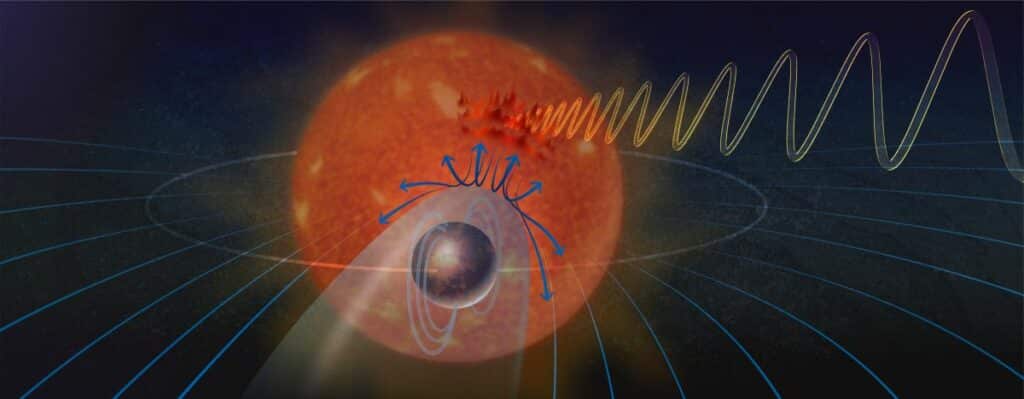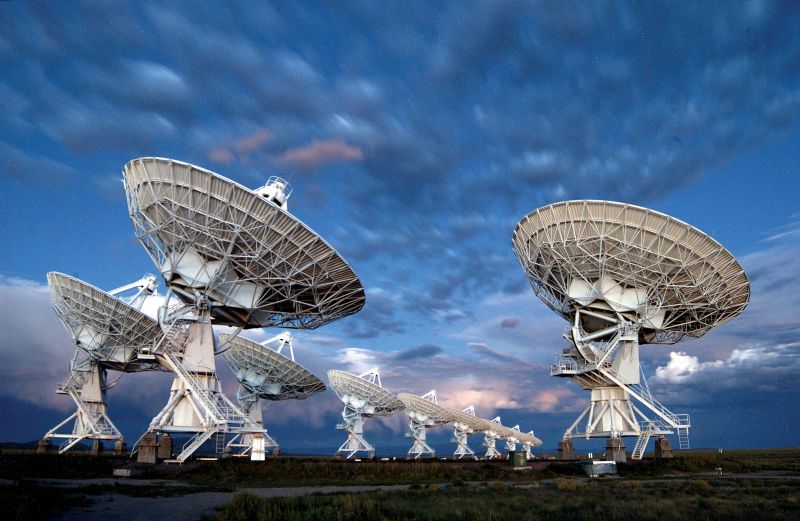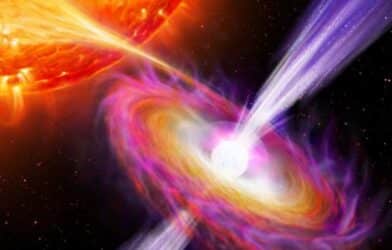A distant, Earth-sized planet emitting a radio signal which could point to it having a similar magnetic field to ours has been discovered. Astronomers say rocky exoplanet YZ Ceti b is a prime candidate for having an Earth-like magnetic field, which could provide vital answers in man’s search for alien life.
Scientists say the search for life on other planets depends in part on whether rocky, Earth-like exoplanets such as the one identified also have magnetic fields. Using a radio telescope, study authors found YZ Ceti b — which is around 70.5 trillion miles away from Earth — to be giving out a repetitive radio signal. They theorize that these waves may be generated by interactions between the magnetic field of the exoplanet and the small red dwarf star it orbits, called YZ Ceti.
The astronomers lauded the discovery as important not only in finding a planet that likely has a magnetic field, but also in providing a future method of finding more such planets. They suggest it could also mean it would be possible to witness the Northern Lights phenomenon — an interaction between magnetic fields and solar weather — on distant planets and stars.
Earth’s magnetic field, as well as keeping our compass needles pointing in the same direction, helps preserve our life-sustaining atmosphere by shielding us from and deflecting high-energy particles and plasma blasted from the sun. A planet’s magnetic field can prevent its atmosphere from being worn away over time by particles spewed from its star.
Now, researchers Dr. Sebastian Pineda and Assistant Professor Jackie Villadsen have discovered this repeat radio signal given off by the red dwarf star YZ Ceti, using a radio telescope to observe it in action.

The faraway star is around 12 light years away from Earth. One light year is equivalent to 5.88 trillion miles.
The pair used the Karl G. Jansky Very Large Array, a radio telescope operated by the U.S. National Science Foundation’s National Radio Astronomy Observatory, to better understand the magnetic field interactions between distant stars and their orbiting planets. Published in the scientific journal Nature Astronomy, the research was also supported by the independent US federal agency the National Science Foundation (NSF).
Joe Pesce, NSF’s program director for the National Radio Astronomy Observatory, says the findings are essential in our search for life on other planets. “The search for potentially habitable or life-bearing worlds in other solar systems depends in part on being able to determine if rocky, Earth-like exoplanets actually have magnetic fields,” he explains in a statement. “This research shows not only that this particular rocky exoplanet likely has a magnetic field, but also provides a promising method to find more.”
Dr. Pineda, from the University of Colorado explains that the team’s excitement at discovering a planet giving off radio waves similar to Earth’s. “We saw the initial burst and it looked beautiful,” he said. “When we saw it again, it was very indicative that, OK – maybe we really have something here. Whether a planet survives with an atmosphere or not can depend on whether the planet has a strong magnetic field or not.”
Villadsen, an astronomer at Bucknell University, adds: “I was seeing this thing that no one has seen happen before.”
The researchers believe the radio waves are generated by interactions between the magnetic field of the rocky exoplanet, YZ Ceti b, and the star it orbits, YZ Ceti. But for such signals to be detectable over such a distance, they must be very strong.
While magnetic fields have been detected in the past on exoplanets the size of Jupiter, finding those a similar size to Earth requires different techniques. Because magnetic fields are invisible, it can be a challenge to assert that a faraway planet has one.
But Villadsen explains that she and her colleagues are searching for a way to detect them. “We’re looking for planets that are really close to their stars and are a similar size to Earth,” she notes. “These planets are way too close to their stars to be somewhere you could live, but because they are so close the planet is kind of ploughing through a bunch of stuff coming off the star. If the planet has a magnetic field and it ploughs through enough star stuff, it will cause the star to emit bright radio waves.”
YZ Ceti and YZ Ceti b provide the ideal pair because they are so close to each other that the latter completes a full orbit in just two days. In comparison, the shortest planetary orbit in our solar system is Mercury’s at 88 days.
As plasma from YZ Ceti careens off the planet’s magnetic “plough,” it then interacts with the magnetic field of the star itself, which generates radio waves strong enough to be observed on Earth. The strength of those radio waves can then be measured; allowing the researchers to determine how strong the magnetic field of the planet might be.
High-energy particles and huge bursts of plasma from the sun sometimes create solar weather around Earth. These ejections from the sun can disrupt global telecommunications and short-circuit electronics in satellites and even on the Earth’s surface.
The interactions between solar weather and the Earth’s magnetic field and atmosphere create the natural phenomenon of the aurora borealis, also known as the Northern lights. Interactions between YZ Ceti b and its star also produce a similar aurora, but this phenomenon occurs on the star itself, equivalent to the Northern lights occurring on the sun.
“This is telling us new information about the environment around stars,” says Pineda. “This idea is what we’re calling ‘extrasolar space weather’. We’re actually seeing the aurora on the star – that’s what this radio emission is. There should also be aurora on the planet, if it has its own atmosphere.”
But while both Villadsen and Pineda agree that YZ Ceti b is the best candidate so far for an exoplanet with a magnetic field, it’s not yet a cut-and-dry case.
“This could really plausibly be it,” says Villadsen. “But I think it’s going to be a lot of follow-up work before a really strong confirmation of radio waves caused by a planet comes out.”
Adds Pineda: “There are a lot of new radio facilities coming online and planned for the future. Once we show that this is really happening, we’ll be able to do it more systematically. We’re at the beginning of it.”
Article by South West News Service writer James Gamble










-392x250.png)

